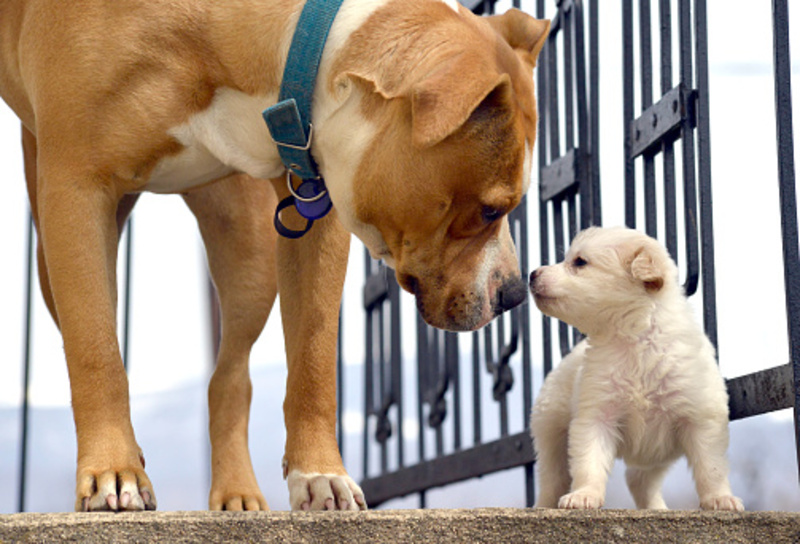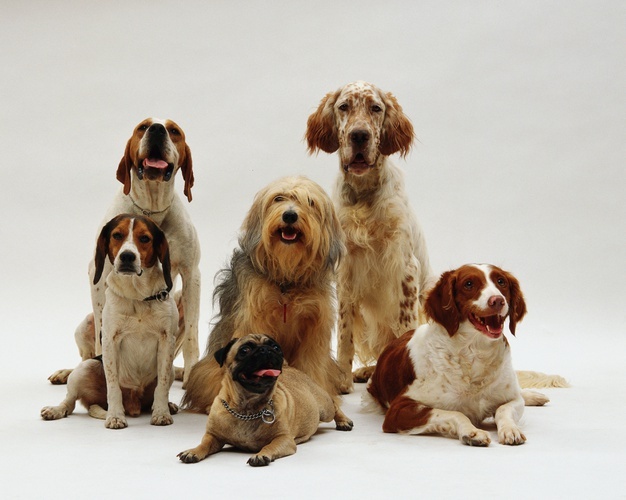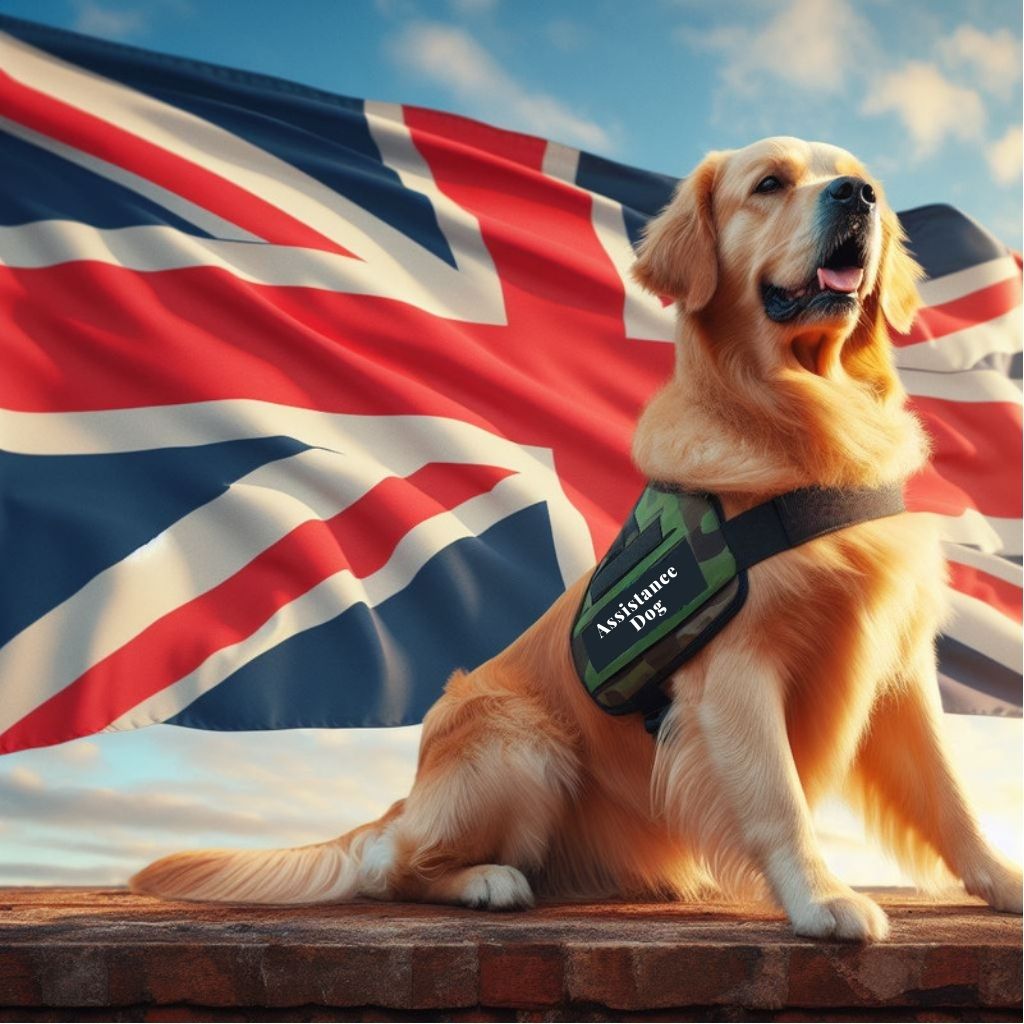- At What Age Are Puppies Considered Adult Dogs?
- Differences in the Process of Growing Based on The Breed Size
- Differences in the Process of Growing of Pure and Mixed Breeds
- Difference Between Physical, Sexual and Emotional Maturity in Dogs
- Switching From Puppy Food to Adult Dog Food
- Veterinarian Checks
- Exercises
- Dog Gear
- Tips on How to Determine a Dog’s Age

When we get a pup, we usually see it as a loving cuddling ball of fur, that we want to pet all day long. Our small paw friends abruptly turn into large (or not so large, depending on the breed) gorgeous adult dogs. How fast they are growing, aren’t they? As you know, puppies do not grow up all of a sudden. Based on the breed, it may take different time for puppies to enter adulthood. Also, it is important to note, that just like humans, dogs experience different types of maturity-physical, sexual and emotional.
When puppies enter adulthood is a topic that all dog owners should be familiar with, as it affects many aspects of a dog’s life such as feeding, reproduction, exercising, and veterinarian checks.
At What Age Are Puppies Considered Adult Dogs?
A pup should have reached the age of 1 year, to be deemed an adult dog. However, puppies may continue to grow in size up to 24 months, until their bone structure fully develops. When a pup will become an adult dog, generally depends on the growth of its skeleton. When new tissue starts building the growth plates are still soft. Over time the new tissue gets harder and turns into bone. This is the point when the growth plates get fully calcified and new tissue is not being produced anymore. It is important to note, that dogs, just like humans, need time to develop muscle and fat and this process keeps going even after the bone structure has fully developed. As we stated above the process of growing in representatives of large and small breeds takes different times.

Differences in the Process of Growing Based on The Breed Size
The smaller the size of a breed is, the less time its representatives will need to complete the process of growing.
-Small breeds are considered fully grown at the age of 6 to 8 months;
-Medium breeds need more time to finish the process. They are considered fully grown approximately at the age of 1 year;
-Large breeds need about 12-18 months to reach their adult size;
-Extra large breeds may need even 2 years to complete the process of growing.
Differences in the Process of Growing of Pure and Mixed Breeds
If you get a purebred dog from a breeder, they may be able to predict what size the pup is likely to reach, based on the size of his/her parents and other dogs from the litter. Other physical and mental features such as the dog’s coat or personality may be predicted as well. However, dogs should be seen as individuals, so you should keep in mind that deviations always can occur.
When it comes to mixed breeds, it is hard to say exactly what size the dog will reach. However, there is a tip for those of you who have a doggy of a mixed breed, to approximately determine their maximum adult size: If you can still feel their growth plates on their rib cage (the growth plates are likely to feel like rounded bumps), this could be considered a sign that the dog has not reached their full height yet.

Difference Between Physical, Sexual and Emotional Maturity in Dogs
We would like to note that the point at that a dog is already considered an adult dog is not the same point when they reach their sexual and emotional maturity.
Physical Maturity
The age of 1 year or 2 years (in larger breeds) is considered an adult age for dogs. Reaching physical maturity does not mean that your dog will suddenly start behaving differently. They still can perform types of behavior, typical for puppies. The essential difference that occurs when a dog reaches physical maturity is related to their feeding, especially the amount of calories they need to take.
Sexual Maturity
The age of 6 months is considered the age when your puppy’s reproduction organs are fully developed, and your pup is able to reproduce. Hence, sexual maturity comes prior to physical maturity.
Emotional Maturity
When a dog will reach emotional maturity depends on each dog as an individual. This process needs more time than the process of reaching sexual and physical maturity. You may recognize when your dog is already mature on several factors:
-They settle down and know what their boundaries are;
-They start responding to your commands during a training process more easily;
-They do not get so easily distracted;
-They get calmer;
-They respond to other dogs’ cues (get more socialized);
It is assumed that when a pup reaches the age of 1-1.5 year, they start acting like adults dogs.

Switching From Puppy Food to Adult Dog Food
The ability to recognize the age of your dog is important for their proper feeding. Puppies need special food, high in proteins and calories, that stimulates their growth and fulfill their nutritional needs. Once a puppy enters adulthood, you should switch their food to adult dog food. Food for adult dogs is not so high in calories and protect canines from becoming overweight.
We would recommend that you make the food transition gradually, i.e. you can start adding small amounts of adult dog food to your canine’s food on a weekly basis, until it starts consisting only of adult dog food.
Veterinarian Checks
Veterinarian visits are another significant thing to consider, directly related to your doggy’s age. Puppies, need to go through monthly checks during the first six months of their lives, and get all administered vaccinations. Up to the age of 16-17 weeks your pup should have gotten vaccination against Distemper, Parvovirus, DHPP and Rabies. First vaccinations are likely to be made when puppies reach the age of 6-8 weeks. You can read more about the veterinarian checks’ frequency, based on the dog’s age here.
Exercises
Puppies are usually full of energy and desire to explore their environment. You may want to engage your pup in a long-lasting activity to help them spend this energy.
Please remember that the bone structure of puppies has not been fully developed and too demanding and long-lasting activities like jogging may have a negative effect on their health. This is especially valid for dogs of larger breeds who need more time to complete the development of their bone structure.
You may be able to fulfill the needs of exercising of a small dog breed, by simply walking them or playing around your house. Larger dogs may need more time for exercising (at least 30 minutes) and some structured plan. However, this does not mean that all large breeds have the same energy level and exercising needs. It is important to keep a healthy level of exercising, so that your dog stays physically fit, does not gain weight and be calm when returning home, without overdoing with it.
Dog Gear
You may need to buy a larger leash and collar. Also, if your dog wears a vest, you will need to properly measure the girth of their chest, to determine what vest size will fit. Other supplies that may need to be switched to their larger versions are: dog’s bed, carrier, and food/water bowl. Also, you may consider buying new toys, that are more sturdy and/or larger and will keep the interest of your dog awake.
Tips on How to Determine a Dog’s Age
There are several factors, that you may want to pay attention to, in order to approximately determine how old a dog is. Younger dogs tend to be more energetic and active. However, some breeds remain quite energetic even after entering adulthood, so this characteristic can not be considered determining. Certain physical features of the dog may give you a more accurate idea of their age. These physical features are:
-Teeth: Puppies have white teeth, that may seem small for their jaws. In this case your pup is likely to be at the age of several weeks (no more than 16); Teeth of old dogs are not so white and shiny, moreover some teeth may have already fallen;
-Muzzle: If there are gray areas around the dog’s muzzle, this means they are adult dogs;
-Eyes: Does the dog have clear eyes, or the eyes’ color is pale? The color of the eyes is also a feature, that change over time.
If you are unable to determine the age of your dog based on the features listed above, we would recommend that you consult a veterinarian.










